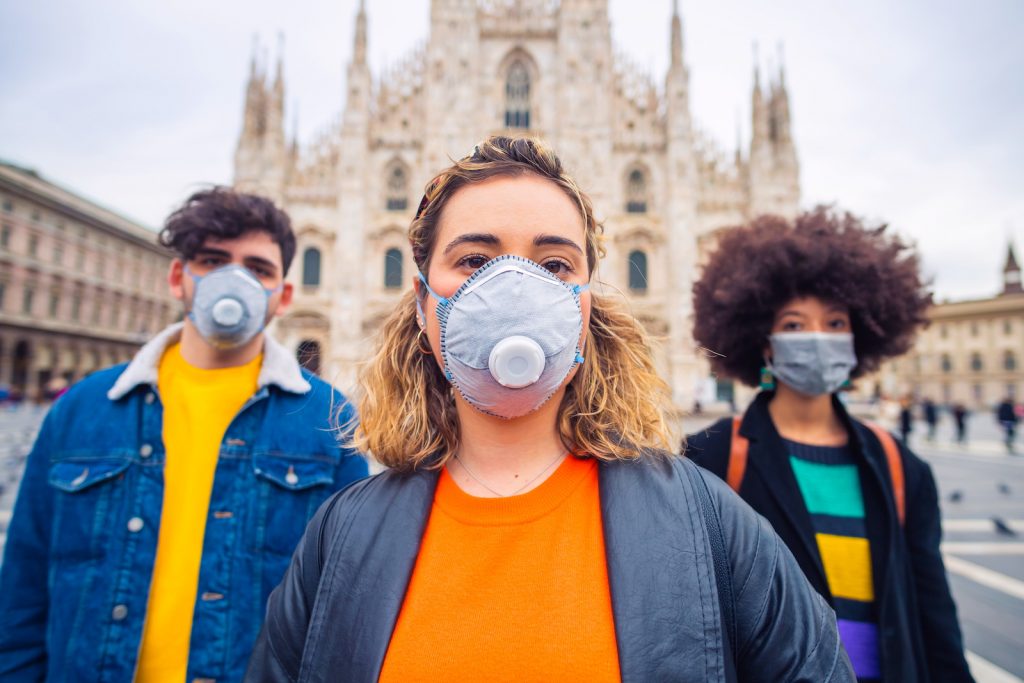According to the World Health Organization, wearing a mask in combination with proper hygienic practices such as hand washing can reduce your risk of contracting Coronavirus, or COVID-19.
They recommend that you choose to wear a mask if you are actively coughing or sneezing, or you are taking care of someone who has tested positive. We have also seen a shift towards homemade masks, as we do not have enough of the surgical grade masks for our healthcare professionals, and they are the ones who need it most.
It is now recommended that you wear a cloth mask whenever you leave the house, as it protects both you and those around you, as up to 25% of people may be asymptomatic but pass it onto others who may feel symptoms. Limiting our exposure in public as wearing a mask when we must go out is our best chance of stopping the spread of the virus.
While the best surgical mask for Coronavirus (N95) might be out of stock in a lot of places, check out our comprehensive list below for other protective face masks you can use.
Surgical N95 Respirator Masks
These surgical-grade masks protect you from both airborne particles and liquid that are near the face. The N95 respirator mask, when fitting properly, filters 95% of small test particles. While it doesn’t completely protect you, it’s pretty darn close. While a surgical mask is more loosely fitting, the N95 mask is designed to have a very close seal to the face. These masks are also sometimes equipped with exhalation valves so it is easier to breathe then they’re on the face. However, these masks are in both high demand and a shortage. Each model of the N95 has to be certified by the National Institute for Occupational Safety and Health and must pass a second inspection from the FDA.
N95 Masks in Demand for Healthcare Workers
These masks are lifelines for the doctors and nurses who are bravely fighting around the clock to beat this global pandemic, so there is a crisis to figure out how to address the shortage as quickly as possible.
On April 2nd, President Trump enacted the Defense Production Act, which is forcing a company called 3M to ramp up production of N95 masks. These masks, since they are in such high demand, are in danger of bidding wars and price gouging as countries fight to secure as many of them as possible to protect their own people.
There has been a call to action throughout our country for those who have been hoarding them to donate them if possible, as every single mask is helpful. In some hospitals, healthcare workers are reusing masks or are limited to just one, putting both them and the patients at greater risk.
Cloth Face Covers (Bandanas, Scarves)
The CDC reports that cloth face covers can be used in place of masks to shield citizens from COVID-19. The CDC says that cloth face coverings should fit snugly against the side of the face, be secured with ties or ear loops, include multiple layers of fiber, allow for breathing without restriction, and be able to be machine dried without damage or change to shape”. They recommend that you wear these when out in public; getting groceries or stepping into the pharmacy can actually be more dangerous than we even think. However, they should not be put on children under the age of 2 or on those with breathing issues or asthma. It’s also essential to be cautious that you are not touching your eyes, nose, or mouth when you are putting on and taking off the mask so as to not suscept yourself to bacteria.
The White House has echoed the CDC’s call for Americans to use items they have at home to make masks if medical-grade masks are not available. They cite this as a way to prevent those who are asymptomatic from spreading the virus without even knowing it. They went on to say that this is a great way to make sure that we are saving the N95 and medical-grade masks for the healthcare workers who truly need them.
Disposable Face Masks
Medical disposable face masks are also in short supply right now. Surgical masks are different from N95 masks because they are disposable and more loosely fitting. However, they are still effective in protecting your nose and mouth. They are usually held in place by elastic bands or ties. This type of mask does not filter out the small particles that N95 respirator masks are able to.
Make Your Own Coronavirus Mask
The internet is now running rampant with DIY mask tutorials! Luckily, many of us have old t-shirts or scarves laying around at home that can serve as masks for when we must go out in public.
Purchase a Homemade Mask
Popular craft platform Etsy, in particular, has seen a huge spike of these cloth homemade masks, as more and more people are seeking to cover themselves when they are out in public. The platform does warn sellers that they cannot advertise that wearing a cloth mask will stop them from getting COVID-19, especially if they are not practicing proper social distancing practices and are not quarantining. This includes staying at least 6 feet away from others at all times and washing hands for at least 20 seconds per wash.
Make a Mask
To make your own mask, the CDC recommends you find a cotton t-shirt. Cotton is comparable to surgical mask material in terms of effectiveness. If you can’t find a cotton material to use, they recommend an old bandana or a scarf. You can also use a bedsheet.
After each use, they recommend that you boil it in for five minutes to completely disinfect it. After you do this, you can use it over and over again each time you have to go in public.
Vanderbilt University Medical Center released this simple step by step guide to creating an elastic-free mask:
Step 1
Place right sides of the cotton fabric together (Be sure any fabric design is placed horizontally.) Cut 9×6 (Adult) or 7.5 x 5 (Child)
Step 2
Starting at the center of the bottom edge, sew around the edges of the fabric leaving about 1.5” to 2” open.
Step 3
Stop, cut the thread. Turn inside out.
Step 4
Pin three (3) ½” tucks on each side of the mask. Make sure the tucks are the same direction.
Step 5
Make ties using Bias Tape or Fabric.
- Bias tape: stitch closed.
- Fabric: Fold in half, turn under 1/4 ” on each long side, iron in place. Stitch long edges closed.
Step 6
Pin one (1) tie at each corner.
Step 7
Sew around the edge of the mask twice, catching the bias tape as you go
The CDC released the following statement on homemade masks:
“In settings where face masks are not available, HCP might use homemade masks (e.g., bandana, scarf) for care of patients with COVID-19 as a last resort [our emphasis]. However, homemade masks are not considered PPE, since their capability to protect HCP is unknown. Caution should be exercised when considering this option. Homemade masks should ideally be used in combination with a face shield that covers the entire front (that extends to the chin or below) and sides of the face.”
When it comes to stopping COVID-19 once and for all, even the best surgical mask for Coronavirus might fail, so the surefire bet is to stay home and keep your social distance.
If you have masks at home, you can check out this link for a detailed list of organizations that are accepting all kinds of masks. If you are able to create hand-sewn face masks at home, you can donate those as well!




